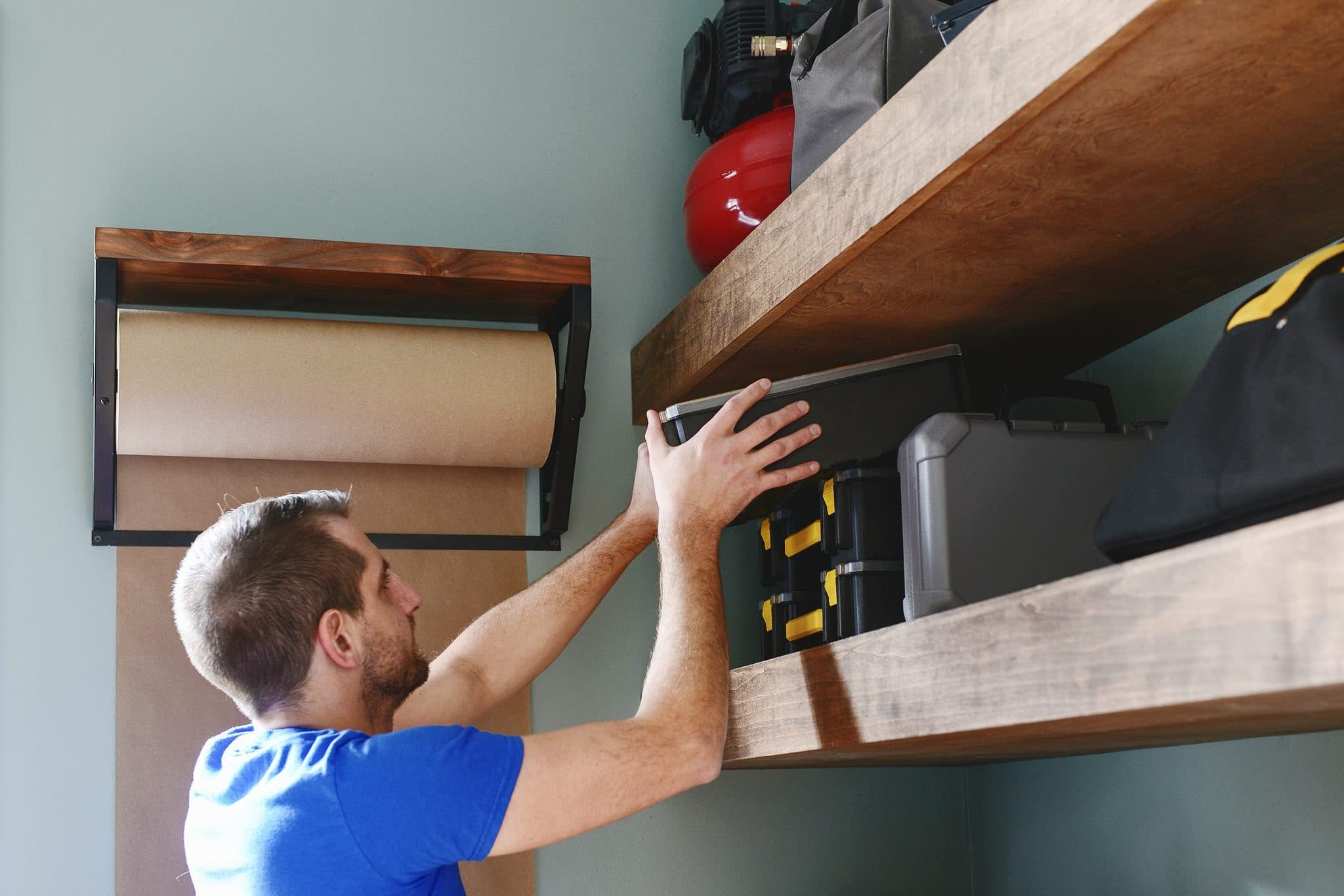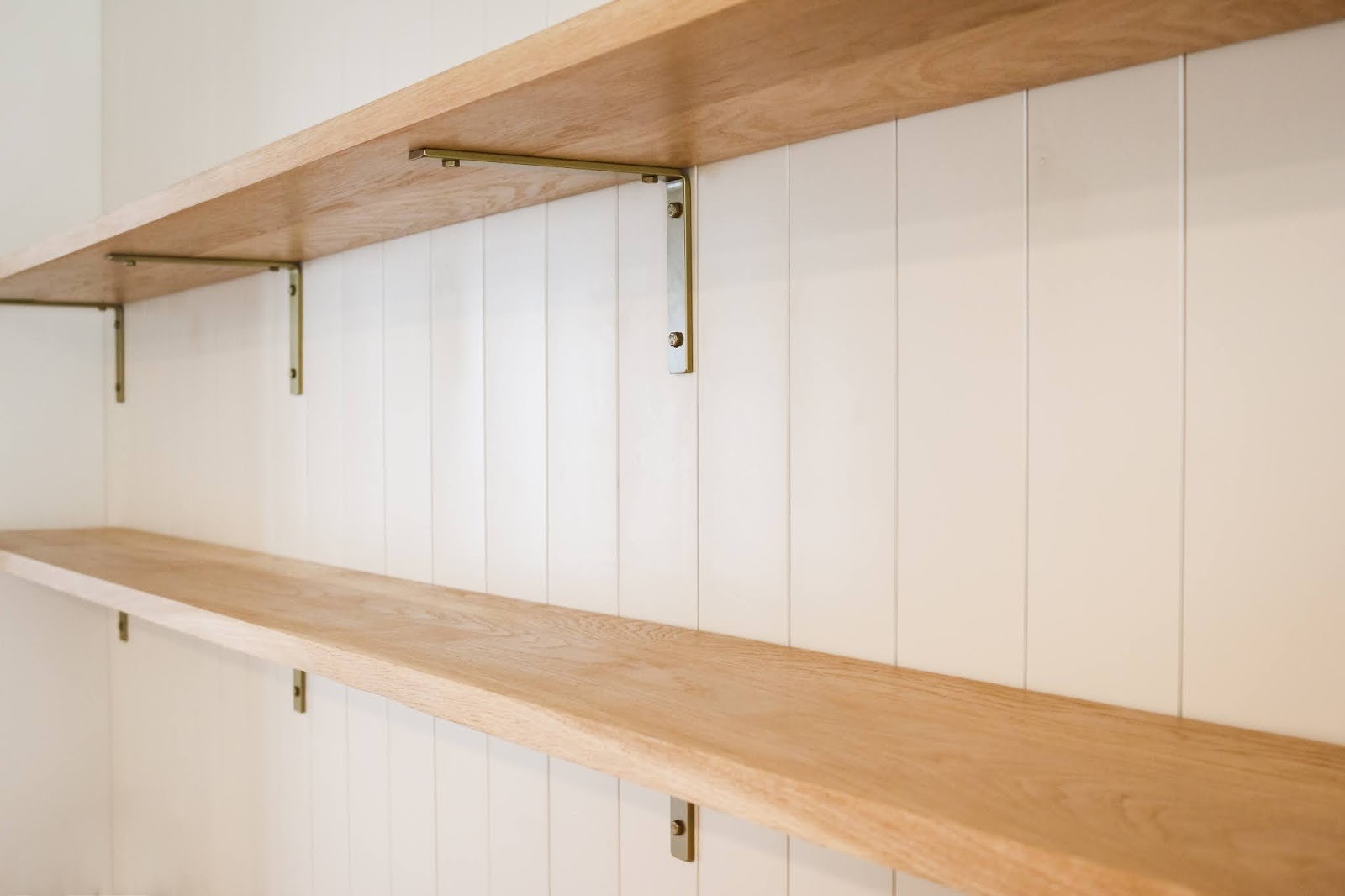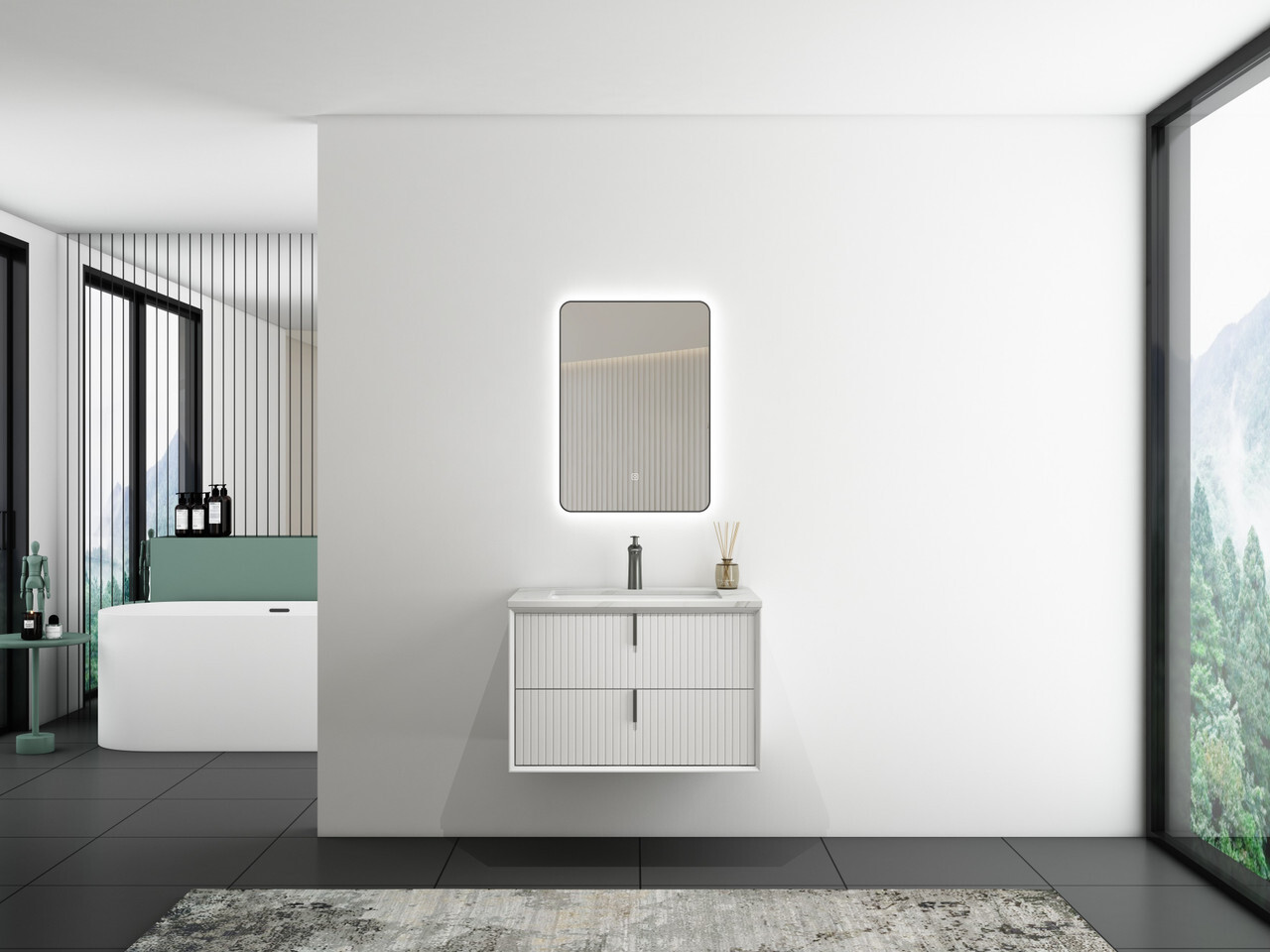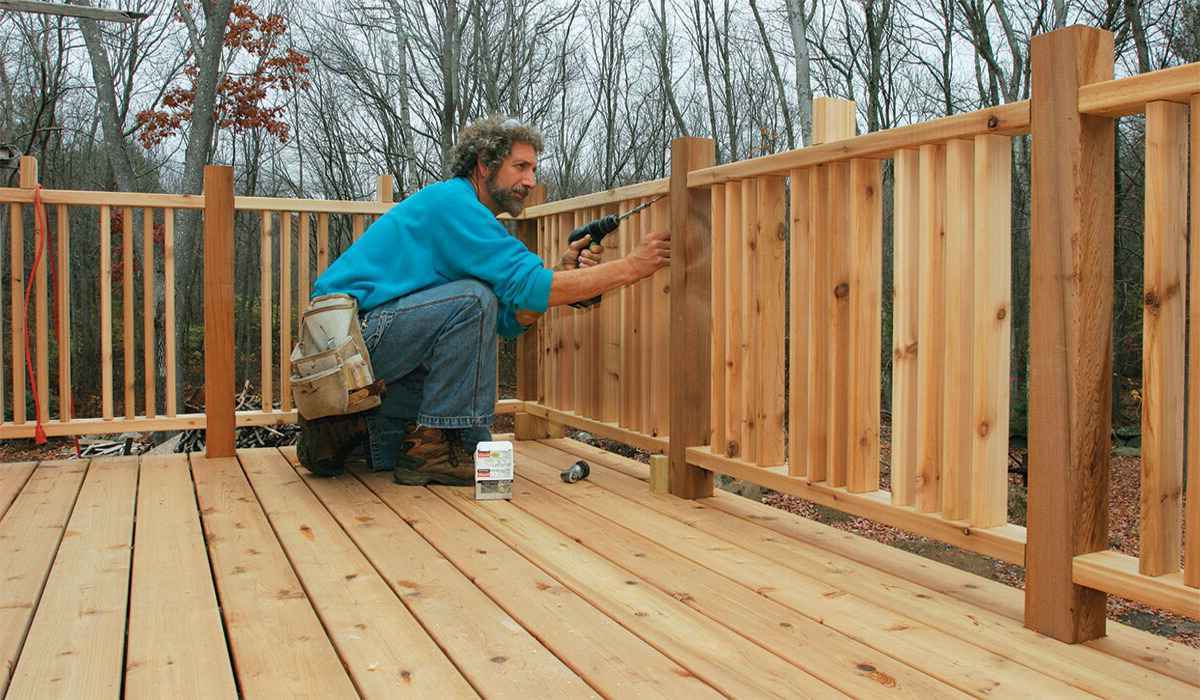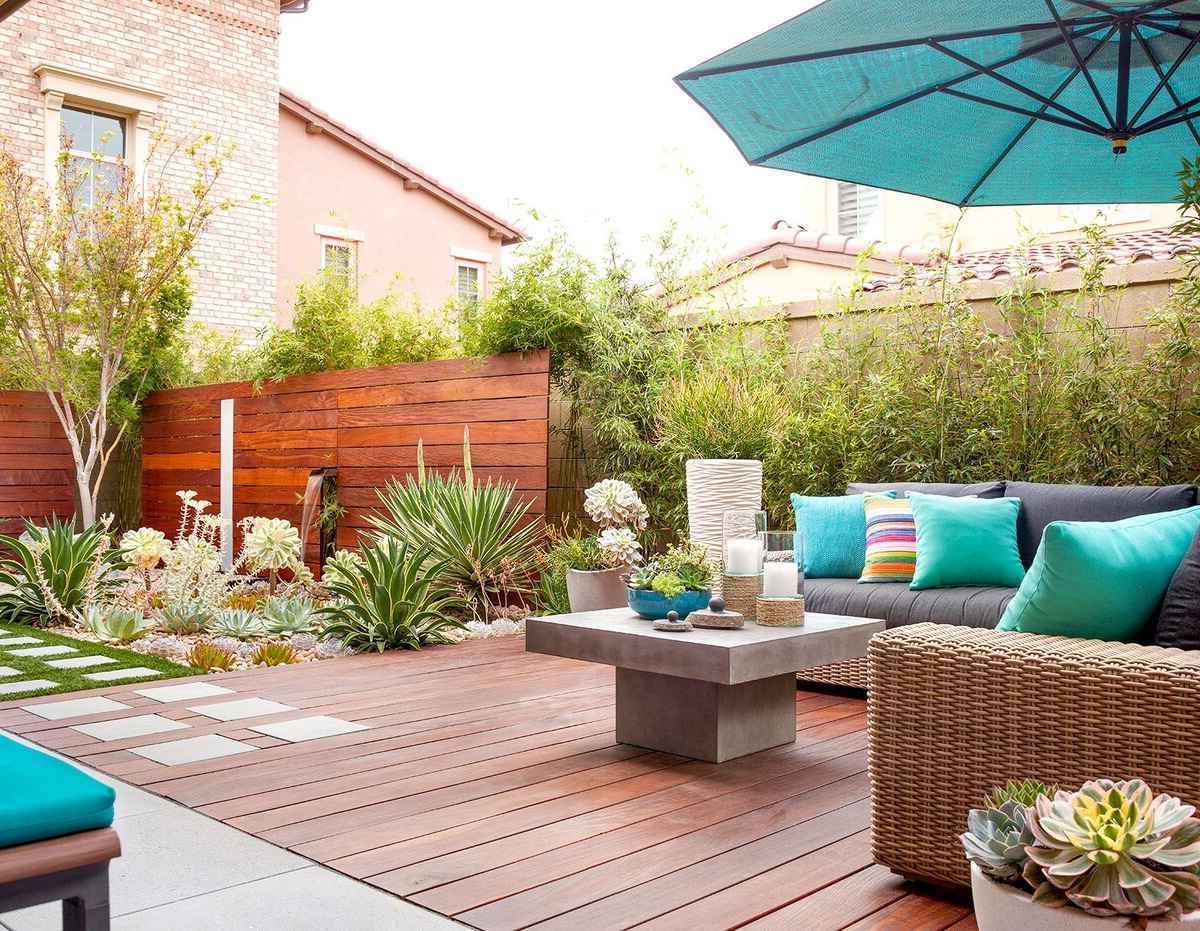Home>Create & Decorate>DIY & Crafts>DIY Guide: Building A Floating Deck On Uneven Ground
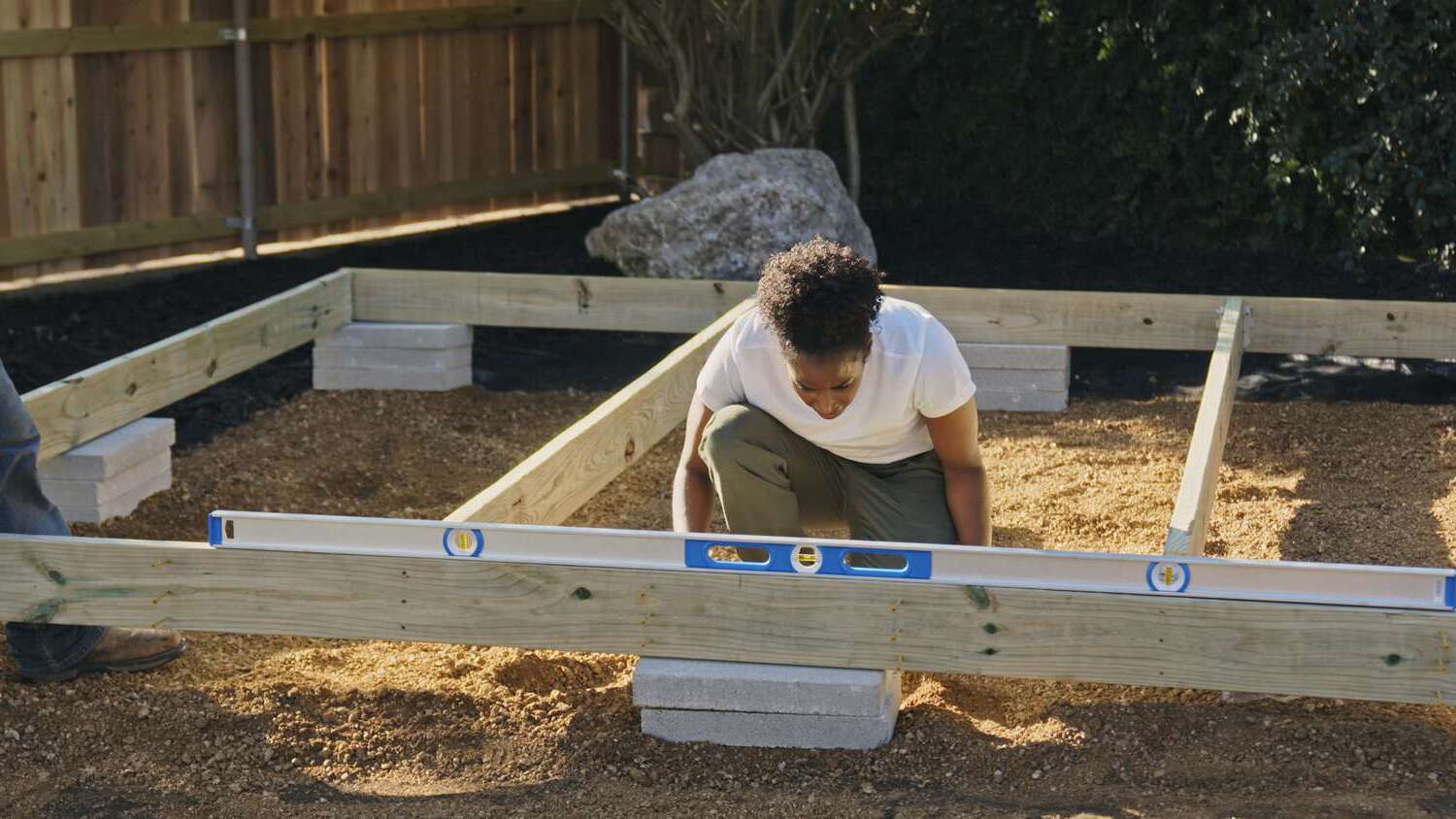

DIY & Crafts
DIY Guide: Building A Floating Deck On Uneven Ground
Published: February 28, 2024

Senior Editor in Create & Decorate, Kathryn combines traditional craftsmanship with contemporary trends. Her background in textile design and commitment to sustainable crafts inspire both content and community.
Learn how to build a sturdy floating deck on uneven ground with our comprehensive DIY guide. Perfect for DIY & Crafts enthusiasts.
(Many of the links in this article redirect to a specific reviewed product. Your purchase of these products through affiliate links helps to generate commission for Twigandthistle.com, at no extra cost. Learn more)
Introduction
Building a floating deck on uneven ground can be a rewarding and practical DIY project for homeowners looking to enhance their outdoor living space. Whether you envision a cozy spot for morning coffee or a versatile entertainment area for gatherings, a well-constructed floating deck can provide the perfect solution. This comprehensive guide will walk you through the step-by-step process of creating a sturdy and visually appealing deck, even on challenging terrain.
A floating deck, as the name suggests, is not attached to a building and instead "floats" on the ground. This design makes it an ideal choice for uneven or sloped landscapes, as it can be adjusted to accommodate varying elevations. By following this guide, you'll gain the knowledge and confidence to tackle this project, transforming your outdoor space into a functional and inviting retreat.
Throughout the following steps, you'll learn how to plan and prepare for the construction, mark and level the ground, build a solid foundation, install the decking, and add the finishing touches. Each stage is crucial to the overall stability and aesthetic appeal of your floating deck. By the end of this guide, you'll be equipped with the skills and insights needed to create a beautiful and durable outdoor deck that complements your landscape while providing a space for relaxation and enjoyment.
Whether you're a seasoned DIY enthusiast or a novice looking to expand your skills, this guide is designed to be accessible and informative. With careful planning, attention to detail, and a willingness to tackle each step methodically, you can successfully build a floating deck that not only adds value to your property but also becomes a cherished part of your outdoor living experience. So, roll up your sleeves, gather your materials, and let's embark on this rewarding journey of creating a stunning floating deck on uneven ground.
Read more: How To Build A Deck On The Ground
Step 1: Planning and Preparation
Before embarking on the construction of a floating deck on uneven ground, thorough planning and meticulous preparation are essential for a successful outcome. This initial step sets the foundation for the entire project, ensuring that you have a clear vision and the necessary resources to bring your deck to life.
1. Assess the Terrain
Begin by carefully surveying the uneven ground where you intend to build the deck. Take note of any significant slopes, dips, or obstacles that may impact the construction process. Understanding the topography of the area will help you determine the best layout and design for your floating deck.
2. Obtain Permits and Regulations
Check with your local building authorities to determine if any permits or regulations are required for constructing a deck on your property. Compliance with building codes and regulations is crucial to ensure the safety and legality of your project. Obtain any necessary permits before proceeding with the construction.
3. Define the Deck Size and Layout
Consider the intended use of the deck and determine the ideal size and layout that will best suit your outdoor space. Take into account factors such as furniture placement, traffic flow, and aesthetic preferences. Sketch out a rough layout to visualize the positioning of the deck in relation to the surrounding landscape.
Read more: How To Build A Deck On Uneven Concrete
4. Gather Materials and Tools
Compile a comprehensive list of materials and tools needed for the project, including lumber, fasteners, concrete blocks, joist hangers, and any specialized equipment. Ensure that you have all the necessary supplies on hand before commencing the construction to avoid delays and interruptions.
5. Create a Detailed Plan
Develop a detailed plan that outlines the construction process from start to finish. This plan should include a timeline, a list of tasks, and a breakdown of the steps involved in building the deck. Having a clear roadmap will help you stay organized and focused as you progress through the project.
6. Consider Drainage and Ventilation
Take into consideration the natural drainage patterns of the area and plan for adequate ventilation beneath the deck. Proper drainage and ventilation are crucial for preserving the integrity of the deck and preventing moisture-related issues over time.
By dedicating ample time to planning and preparation, you set the stage for a smooth and efficient construction process. This thoughtful approach will minimize potential challenges and ensure that your floating deck on uneven ground is built with precision and care.
Step 2: Marking the Ground and Leveling
Accurate marking of the ground and meticulous leveling are critical steps in the construction of a floating deck on uneven terrain. This phase sets the foundation for a stable and visually appealing structure, ensuring that the deck is well-positioned and balanced within the landscape.
1. Establish Reference Points
Begin by identifying and marking reference points on the ground to delineate the perimeter of the deck. Use stakes and string to outline the shape and dimensions of the deck, taking into account any irregularities in the terrain. This initial step provides a clear visual guide for the layout and helps establish the boundaries for excavation and leveling.
2. Measure and Adjust for Slopes
Utilize a level and measuring tools to assess the slope and elevation changes across the designated deck area. Take accurate measurements at various points to determine the degree of incline and identify areas that require adjustment. Adjust the string lines and stakes to accommodate the natural contours of the ground, ensuring that the deck will be level and stable once constructed.
3. Excavate and Level the Ground
With the perimeter marked and adjustments made for slopes, proceed to excavate the ground within the outlined area. Remove any vegetation, rocks, or debris to create a clear and even surface for the foundation. Utilize a shovel, rake, or grading equipment to level the ground, taking care to maintain the intended slope for proper drainage.
4. Install Ground-Level Support
Once the ground is leveled, install ground-level support elements such as concrete blocks or adjustable deck supports to provide a stable base for the deck. Position the supports strategically to correspond with the layout of the deck, ensuring that they are securely anchored and aligned with the marked perimeter. Verify the levelness of each support to guarantee uniform support for the deck structure.
5. Reassess and Fine-Tune
After installing the ground-level support, reassess the overall layout and leveling of the marked area. Make any necessary adjustments to ensure that the ground is uniformly leveled and that the support elements are properly aligned. Take the time to fine-tune the positioning of the supports, as this will directly impact the stability and longevity of the floating deck.
By meticulously marking the ground and diligently leveling the terrain, you establish a solid groundwork for the subsequent stages of deck construction. Attention to detail during this phase is instrumental in ensuring that your floating deck on uneven ground is structurally sound and visually harmonious with its surroundings.
Step 3: Building the Foundation
The foundation of a floating deck on uneven ground is a critical element that provides structural support and stability. Building a robust foundation is essential for ensuring the longevity and safety of the deck, especially when dealing with varying elevations and irregular terrain. This phase involves the installation of key components that will bear the weight of the deck and distribute it evenly across the ground.
1. Positioning the Joists
Begin by positioning and securing the joists, which are horizontal framing members that form the primary framework of the deck. Place the joists on top of the ground-level supports, ensuring that they are aligned with the layout of the deck and spaced according to the predetermined design. Use joist hangers or brackets to securely attach the joists to the supports, maintaining a consistent and level orientation.
2. Adding Cross Bracing
Incorporate cross bracing between the joists to enhance the structural integrity of the foundation. Cross bracing consists of diagonal supports that connect the joists, preventing lateral movement and reinforcing the overall stability of the deck. Install the cross bracing at strategic intervals, taking into account the size and load-bearing requirements of the deck.
Read more: How To Build A Floating Deck On A Slope
3. Securing the Ledger Board
If the deck is adjacent to a structure, such as a house or a retaining wall, secure a ledger board to the existing surface. The ledger board provides additional support and attachment points for the deck, ensuring that it remains firmly anchored. Properly fasten the ledger board using lag screws or through-bolts, taking care to align it accurately with the layout of the deck.
4. Installing Rim Joists
Install rim joists along the perimeter of the deck, connecting them to the ends of the joists to enclose the framework. Rim joists serve to stabilize the outer edges of the deck and provide a cohesive structure. Secure the rim joists with appropriate fasteners, ensuring that they are flush with the tops of the joists and properly aligned with the overall layout.
5. Adding Additional Supports
Depending on the size and design of the deck, consider adding additional supports such as beams or piers to reinforce the foundation. These supports help distribute the weight of the deck evenly and provide added stability, particularly in areas with significant elevation changes. Position the additional supports strategically to bolster the foundation and minimize any potential sagging or shifting.
By meticulously building the foundation according to these steps, you establish a solid and reliable base for the floating deck. The careful placement and secure attachment of the joists, cross bracing, ledger board, rim joists, and additional supports are fundamental to the structural integrity of the deck. A well-constructed foundation sets the stage for the subsequent installation of the decking materials, ensuring that your floating deck on uneven ground is built to withstand the test of time.
Step 4: Installing the Decking
With the foundation in place, the installation of the decking marks a significant milestone in the construction of a floating deck on uneven ground. This phase involves laying the surface materials that will form the functional and aesthetic platform for your outdoor space. The careful selection and precise installation of decking materials are essential for creating a visually appealing, durable, and comfortable deck that seamlessly integrates with the natural landscape.
Read more: How To Build A Floating Deck
1. Selecting Decking Materials
Begin by selecting the appropriate decking materials that align with your design preferences, budget, and maintenance considerations. Common options include wood, composite, or PVC decking boards, each offering unique characteristics in terms of appearance, durability, and upkeep. Consider factors such as weather resistance, color, texture, and sustainability when choosing the decking material that best suits your needs.
2. Preparing the Surface
Before laying the decking, ensure that the foundation is clean, level, and free of any debris or protrusions that may interfere with the installation. Inspect the joists, rim joists, and additional supports to verify their structural integrity and alignment. Address any irregularities or imperfections in the foundation to create a smooth and stable surface for the decking.
3. Laying the Decking Boards
Commence the installation by laying the decking boards perpendicular to the joists, starting from one end of the deck and working towards the opposite end. Use appropriate fasteners, such as screws or hidden clips, to secure the boards to the joists, ensuring a uniform gap between each board for drainage and expansion. Take care to stagger the joints between adjacent rows of boards for added strength and visual appeal.
4. Cutting and Shaping
As you progress with the installation, you may need to cut and shape the decking boards to fit around obstacles, corners, or curved edges. Utilize a saw, router, or specialized cutting tools to achieve precise and seamless transitions between the boards, maintaining a consistent and polished appearance across the entire deck surface.
Read more: How To Build A Shed Ramp On Uneven Ground
5. Finishing Touches
Upon completing the installation of the decking boards, attend to any finishing touches that enhance the overall look and functionality of the deck. Consider adding trim, fascia, or railing elements to provide a polished edge and secure the perimeter of the deck. Apply a protective sealant or finish to the decking material to safeguard it against weathering, UV exposure, and moisture infiltration.
By meticulously following these steps, you will achieve a well-crafted and visually striking deck surface that complements the natural beauty of the surrounding landscape. The installation of the decking represents a pivotal stage in the construction process, bringing your vision of a floating deck on uneven ground to fruition with precision and artistry.
Step 5: Adding Finishing Touches
With the decking installed, the final phase of building a floating deck on uneven ground involves adding finishing touches that elevate the aesthetic appeal and functionality of the outdoor space. These details contribute to the overall ambiance of the deck, creating a welcoming and polished environment for relaxation, entertainment, and enjoyment.
1. Enhancing with Railings and Balustrades
Consider incorporating railings and balustrades to enhance the safety and visual appeal of the deck. Whether crafted from wood, metal, or composite materials, these features provide a sense of enclosure and security while adding a decorative element to the deck's perimeter. Select railing designs that complement the style of the deck and align with your personal preferences.
2. Incorporating Lighting Elements
Integrate lighting elements to extend the functionality of the deck into the evening hours. Options include overhead string lights, recessed deck lighting, or solar-powered fixtures that illuminate pathways and stairs. Thoughtfully placed lighting not only enhances the ambiance but also improves safety and accessibility, allowing for continued enjoyment after sunset.
Read more: DIY Door Painting Jig: Step-by-Step Guide
3. Adding Seating and Furnishings
Introduce seating and furnishings that transform the deck into a comfortable and inviting outdoor living space. Whether it's a cozy seating area with lounge chairs, a dining set for al fresco meals, or a hammock for relaxation, the right furnishings can define the purpose of the deck and create a welcoming atmosphere for gatherings and solitude alike.
4. Incorporating Greenery and Planters
Integrate greenery and planters to infuse natural beauty into the deck environment. Consider potted plants, hanging baskets, or vertical gardens to add color, texture, and a touch of nature to the space. Strategically placed greenery softens the transition between the deck and the surrounding landscape, creating a harmonious and tranquil setting.
5. Applying Decorative Accents
Personalize the deck with decorative accents that reflect your style and personality. This could include outdoor rugs, throw pillows, decorative lanterns, or artwork that adds character and charm to the space. By incorporating these details, you can create a cohesive and inviting outdoor retreat that feels like an extension of your indoor living area.
6. Sealing and Maintenance
Complete the finishing touches by applying a protective sealant to the decking material to safeguard it against the elements. Regular maintenance, including cleaning, sealing, and inspecting the deck, is essential for preserving its beauty and structural integrity over time. Establish a maintenance routine to ensure that your floating deck remains a source of pride and enjoyment for years to come.
By attending to these finishing touches, you elevate the floating deck on uneven ground from a construction project to a personalized and functional outdoor oasis. Each detail contributes to the overall ambiance and usability of the deck, creating a space that beckons for relaxation, entertainment, and appreciation of the natural surroundings.
Read more: How To Build A Floating Dock
Conclusion
In conclusion, the process of building a floating deck on uneven ground is a testament to the transformative power of DIY projects. From the initial planning and preparation to the meticulous installation of decking and the addition of finishing touches, every step contributes to the creation of a functional, visually appealing, and enduring outdoor space.
By embracing the challenges posed by uneven terrain and leveraging careful planning and precise execution, homeowners can unlock the potential of their landscapes, turning previously unusable areas into inviting retreats. The versatility of floating decks allows for customization to suit individual preferences and the unique characteristics of the outdoor environment.
Through this comprehensive guide, DIY enthusiasts and homeowners have gained valuable insights into the intricacies of constructing a floating deck on uneven ground. The emphasis on thorough planning, precise leveling, robust foundation building, and thoughtful finishing touches underscores the importance of attention to detail in achieving a successful outcome.
Furthermore, the journey of building a floating deck transcends the physical construction process, offering a sense of accomplishment, creativity, and a deeper connection to the outdoor living space. The satisfaction of witnessing the transformation of a challenging landscape into a functional and aesthetically pleasing deck is a testament to the rewards of DIY endeavors.
As homeowners embark on their own floating deck projects, they are encouraged to approach each step with patience, creativity, and a willingness to adapt to the unique characteristics of their terrain. By doing so, they can create a space that not only enhances the value of their property but also enriches their daily lives, providing a tranquil setting for relaxation, entertainment, and connection with nature.
In essence, the construction of a floating deck on uneven ground is a testament to the potential for innovation and transformation within the realm of DIY and outdoor living. It is a journey that invites individuals to reimagine their landscapes, embrace the inherent beauty of natural contours, and craft a space that reflects their vision and lifestyle. With the knowledge and inspiration gleaned from this guide, homeowners are empowered to embark on their own floating deck projects, confident in their ability to create a captivating and enduring outdoor sanctuary.


